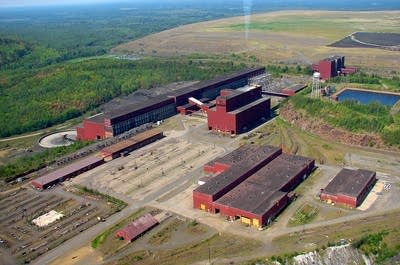State offers leases for metallic minerals exploration

Minnesota is collecting bids from mining companies for leases on state lands that could contain gold, copper and other metallic mineral deposits.
The Minnesota Department of Natural Resources holds lease sales periodically for mining and mining exploration, but a heightened interest in nonferrous mining in the state has led officials to offer leases for state lands that companies had previously passed over.
Prices for copper, nickel, gold and other metals are high, and DNR officials believe companies will want to do prospecting work in some areas of Aitkin, Benton, Carlton, Itasca, Morrison, Pine and St. Louis counties that haven't been explored.
The DNR is collecting bids for a lease sale to be held Jan. 12.
Create a More Connected Minnesota
MPR News is your trusted resource for the news you need. With your support, MPR News brings accessible, courageous journalism and authentic conversation to everyone - free of paywalls and barriers. Your gift makes a difference.
"There's been sort of a steady interest in this type of metallic mineral lease," said Marty Vadis, director of the DNR's lands and minerals division. "[A lease sale] really is based on requests from industry."
"Thousands of holes get drilled and explored, and a very very small number of projects go all the way to development."
Vadis said it remains to be seen how much interest the sale will generate, but Frank Ongaro, who directs the group Mining Minnesota, said he expects interest will be high. Prices have something to do with it, but demand for metals that can be used in electronics and other products has also risen in recent years, Ongaro said.
"The supply and demand of metals long term is probably a bigger driver of interest," said Ongaro, whose group promotes non-ferrous mining in the state.
Still, it can take many years before prospecting and exploration efforts lead to the development of a mine. Companies have been looking for metallic mineral deposits in Minnesota for 50 years, but only one project -- PolyMet Mining's proposed copper-nickel mine near Hoyt Lakes -- is close to being approved, Ongaro said.
"Thousands of holes get drilled and explored, and a very very small number of projects go all the way to development," he said.
Besides copper and nickel, PolyMet hopes to extract smaller amounts of some other metals like gold and platinum. A draft environmental study of the project is currently being reviewed and must be approved before the mine can be developed.
Iron mining has been a part of Minnesota's economy for many years. Taconite production is expected to continue to be dominant, but there's a possibility PolyMet's nonferrous mining project could begin a new era of mining for other metals in the state.
Because some of the processes used in nonferrous mining create a risk for sulfuric acid leaking into the environment, many environmental groups have urged lawmakers to establish new rules aimed at making sure a mining company is held financially responsible for any future problems.
Chuck Laszewski, communications director for the Minnesota Center for Environmental Advocacy, said the fact that the DNR's new lease sale might expand mining exploration in Minnesota should make policy makers think about enacting laws that will ensure the state's lakes and rivers are protected if a company proceeds with non-ferrous mining.
"We're not talking about just St. Louis County anymore," he said. "People who never thought they would see a mine in their county could now see a mine in their county, and they better pay attention to that."
Advocates of opening Minnesota to nonferrous mining emphasize the jobs that would be created if projects are developed. The PolyMet project is forecast to create some 400 new positions.
Mining can also bring the state royalty money. Vadis said mining company leases bring in about $500,000 each year. If a mine is developed on public land, the state gets additional revenue from royalties on the metals extracted.
The state's royalty income on iron ore and taconite is between $28 million and $32 million a year, Vadis said. One DNR estimate showed royalties for nonferrous mining could reach $1.4 billion over a 20- to 25-year period, but it's unknown whether that will happen.
"It really is a lot of speculation, because each of these deposits has a long way to go," Vadis said.
